
FELCO 2 – An emblematic tool since 1948
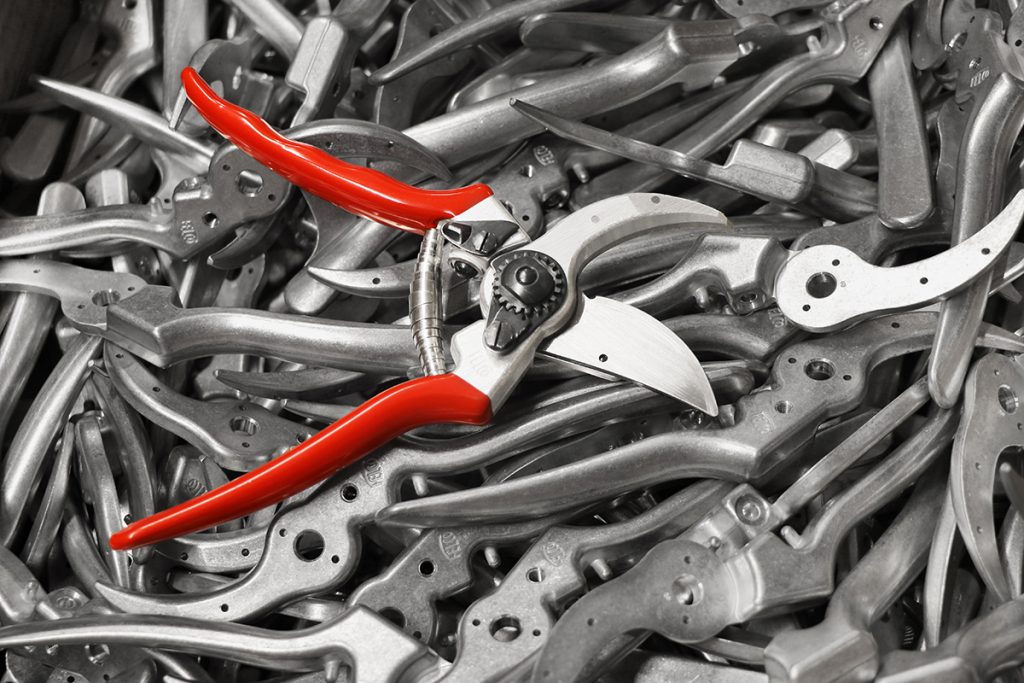
Steel strip
The production of the FELCO 2 blades is based on the selection of a specific carbon steel in the form of a coiled strip.
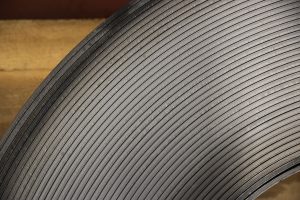
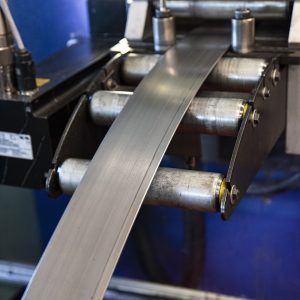
Stamping
Stamping is the first step in the blade production process. Here, the raw material is fed into a 30-ton press and every second a blade is cut out and marked with the FELCO 2 reference.
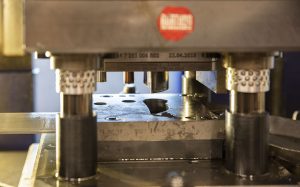
The stamping process allows a high production rate, while guaranteeing a very high level of cutting precision.
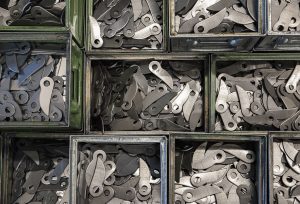
Formatting
Once stamped, the steel has been slightly deformed. A reshaping is carried out and the pin and wire cutter holes are drilled.
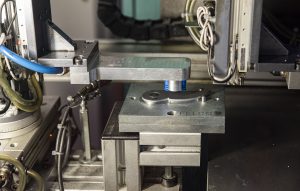

Flattening
After the heat treatment, which gives the FELCO 2 blade its full rigidity, it is levelled on both sides to achieve a perfect shape.
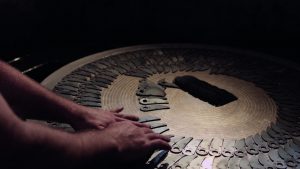

Grinding
Grinding, which is the last operation in the process, consists of sharpening and chamfering the back of the blade, for which FELCO is renowned.
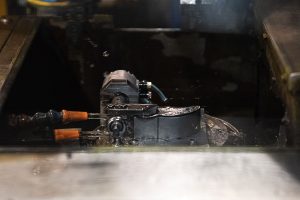
Here you can easily see the different stages of the blade, from hardening, to flattening and finally grinding.

Aluminium handles
In parallel, the production of aluminium handles has also started.
Here, too, it all starts with the raw material: aluminium, which undergoes a hot forging process, known for its unique strength properties. The folded aluminium plot is heated and then pressed to form the two handles of the FELCO 2.
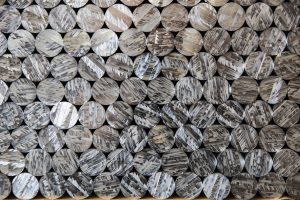
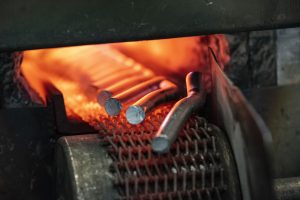
Tribofinishing
The roughness of the aluminium handles is removed with small diamond stones.
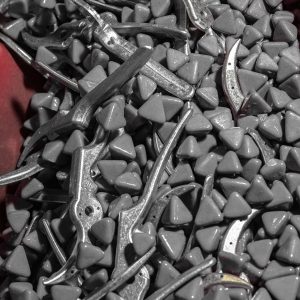
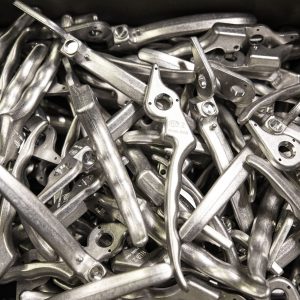
Pre-assembly
Fitting of various components to the handles: socket, ratchet, pin, counterblade and rivets.
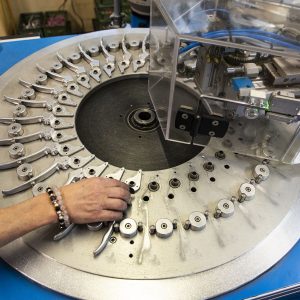
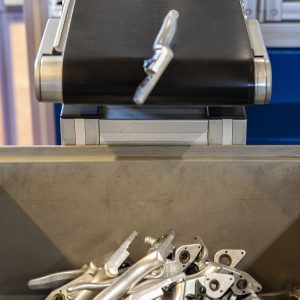
Riveting
One of the features of the FELCO 2 is the riveting of the counterblade, a process that is still partly manual and requires a great deal of precision and expertise.
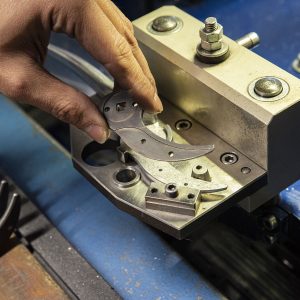
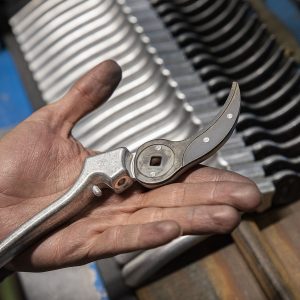
Sanding of handles
Each FELCO 2 anvil holder is manually sanded to remove all the roughness from the previous operations and to obtain a perfect surface finish. The cutting edge of the counter-blade is finally sharpened to allow a perfect intersection with the blade.
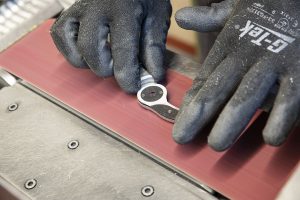
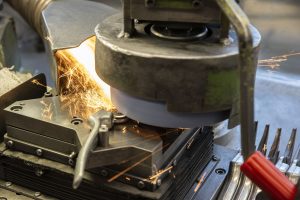
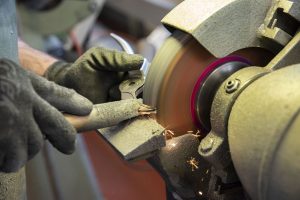
Covering of the handles
The iconic red coating on the FELCO 2 aluminium handles is the result of a complex dipping process in phthalate-free PVC. During this phase, the handles are immersed in a constant volume basin to ensure the homogeneity of the covering. The whole process takes about 2 hours.
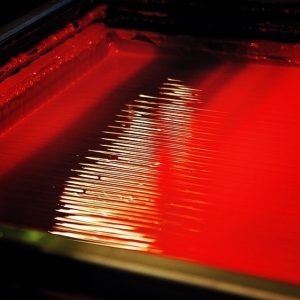

Assembly is certainly one of the most interesting and fascinating processes to see during the manufacture of a FELCO 2. Here, our employees have a well-organised workstation with all the components to be assembled at hand for a total of 10 operations.

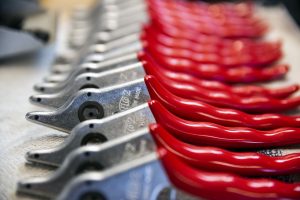
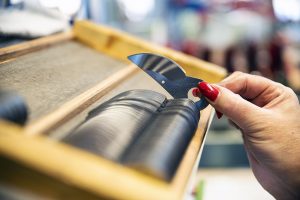
Our operators take less than a minute to assemble a FELCO 2 pruning shear. Firstly, they mount the blade, then they overlap the handle of the counter-blade and fix them with the respective bolts.
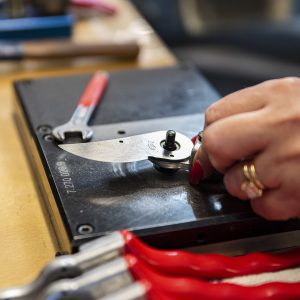
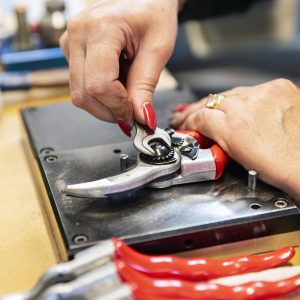
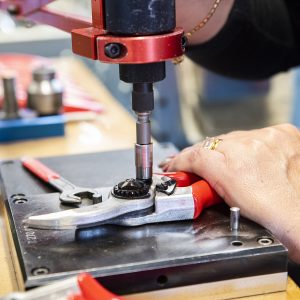
Finally, before inserting the spring, they check that the adjustment is perfect, they dip the cutting head in some oil and then the pruning shear is ready to move on to the last stage of the process.
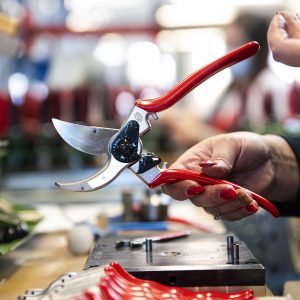
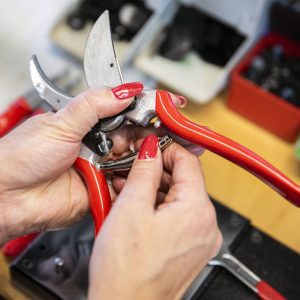
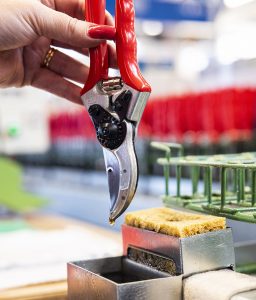
The last step in the production of the FELCO 2 is, of course, the packaging. This is where our employees place the FELCO 2 in its blister pack with the adjustment key. Many FELCO 2s are ready to come to you all over the world.

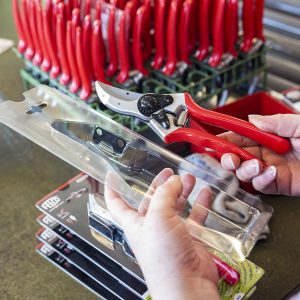
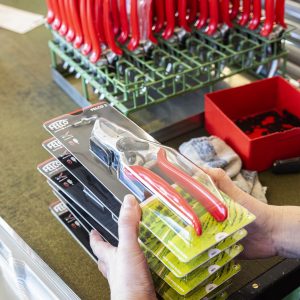
Photo Credit : Tripack
